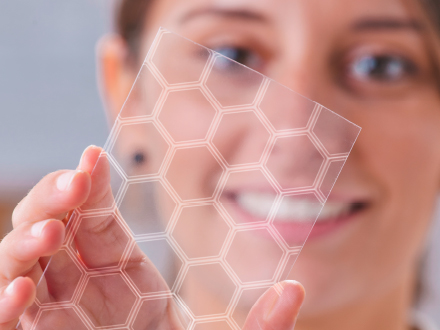The dawn of the graphene age
The hybrid path to graphene innovation
Graphene has been presented as a miracle material since it was first isolated by researchers at the University of Manchester in 2004. From making our computers 1 000 times faster to enabling bionic devices, cleaning up radioactive waste or desalinising water in seconds, there seemed to be no limit to what we could possibly do with this one atom-thick crystal. Yet, almost 15 years later, the truth is that graphene still has to fully deliver on its promise. The main problem used to lie in cost and mass scale production, although research efforts have enabled a significant price drop and scale-up of production capacities over the past few years. Whilst this remains an issue, stakeholders are now pointing at the lack of standardisation as the main obstacle on the path to commercial products. In Europe, it is hoped the Graphene Flagship will solve these problems. The EU’s largest research initiative, the Graphene Flagship has a EUR 1 billion budget and a network of over 150 academic and industrial research groups. Now approaching its so-called “core 2” phase, the project has led to the submission of 37 patent applications and the launch of 17 products onto the market over the past year. These include Airbus winglets made of graphene composites, a motorcycle helmet with graphene coating, a new viscoelastic graphene-polymer sensor, amongst others. The common trait between all these innovations? The sidelining of what we could call the “pure graphene” path, in favour of its combination with other materials to enhance existing products. When combined with composites or plastics, for instance, graphene does wonders in terms of overall material strength or thermal conductivity. This month’s issue of the research*EU Results Magazine puts the spotlight on some of the latest projects exploiting this potential. From smart textiles to graphene-reinforced polymers, health monitoring wearables and position sensors, our special feature section showcases how graphene can cast a wide net across multiple industrial sectors. This section is followed by the usual thematic ones on health, society, transport, environment, agriculture and forestry, industry, information and communication technology, space and fundamental research. We look forward to receiving your feedback. You can send questions or suggestions to: editorial@cordis.europa.eu



